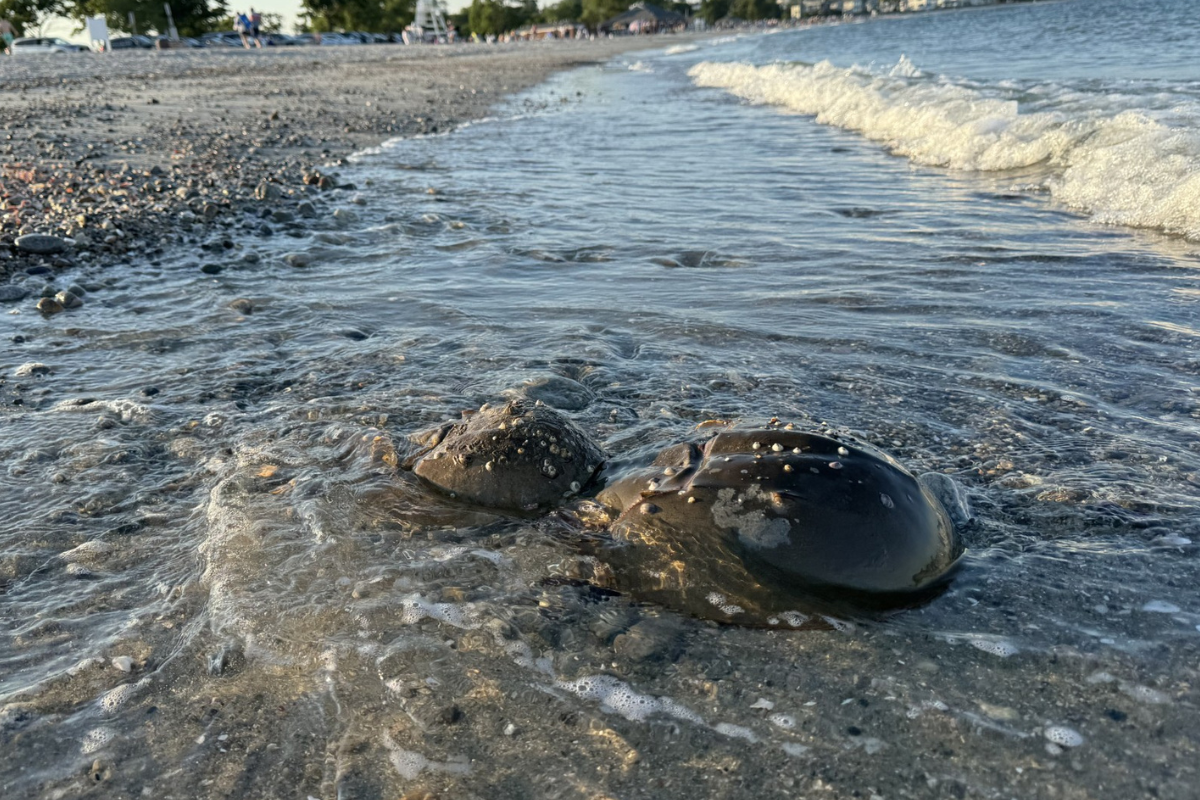Big pharma has no excuse anymore to use the unique blue blood of horseshoe crabs in drug testing.
U.S. Pharmacopeia has finally approved a new rule that would allow U.S.-based biomedical companies to use two synthetic alternatives for detecting toxins in injectable medicines and implants—including insulin, heart stents, hip replacement systems, and more recently, the Covid shot.
“The time to end the cruel bleeding of horseshoe crabs and employ safe and effective alternatives is long overdue,” said Jennifer Best, director of Friends of Animals Wildlife Law Program, which had submitted Comments to USP in support of the proposal earlier this year. “This is important development in the effort to restore and save Atlantic horseshoe crabs.”
The U.S. has lagged behind other countries in recognizing synthetic alternatives are viable in endotoxin testing—they’ve been available for over two decades. The European Pharmacopeia has endorsed their use since 2019, as have regulating bodies in Japan and China.
Unfortunately, the new rule doesn’t mandate that U.S. pharmaceutical companies use the synthetic alternative, and it doesn’t prohibit using the horseshoe crab blood alternative. But FoA is optimistic the demand for horseshoe crabs will drop because of the change.
The USP decision affects the five FDA-licensed biomedical companies along the East Coast. According to the Atlantic States Marine Fisheries Commission, a federal regulator, some 912,000 horseshoe crabs were taken by the biomedical industry throughout the Atlantic coast in 2022, the latest year for which data is available. Of those, about 146,000 died.
While there would be upfront costs for switching, in terms of new equipment and software, and an investment in time, overall the synthetic alternatives are less expensive, so that helps offsets costs.
“Let the USP decision be the death knell for the ghoulish practice of ‘bleeding’ horseshoe crabs, many of them to death, for what the science and the industry itself now admits is unnecessary,” said Priscilla Feral, president of Friends of Animals.
Getting these ancient mariners out of the medical supply chain is just one piece of the puzzle when it comes to saving horseshoe crabs. They are also being decimated by the fishing industry, which kills them and chops them up as bait to catch eel and whelk. That’s why Friends of Animals has petitioned the U.S. Secretary of Commerce to list the Atlantic horseshoe crab under the Endangered Species Act.
FoA is also currently working with a coalition of Massachusetts groups to end the killing of horseshoe crabs in that state for bait, following successful legislative efforts to end the killing in Connecticut and New York. Connecticut banned killing horseshoe crabs in 2023 and we have urged NY Gov. Hochul to sign a similar NY bill into law by the end of 2024.
Horseshoe crabs (Limulus polyphemus) are older than even the dinosaurs, dating back more than 450 million years. A female horseshoe crab can deposit around 20,000 eggs a night and up to some 100,000 eggs in each mating season, roughly April through June. Migratory birds need to eat horseshoe crabs’ eggs, especially the threatened red knot. In 2021, fewer than 7,000 red knots were found in Delaware Bay, a key spring stopover habitat. That’s less than a third found in 2020. Without sufficient horseshoe crab eggs to feed on, migratory birds run out of energy and die before reaching their breeding grounds.
Horseshoe crabs are already functionally extinct in Long Island Sound, which means they no longer play an effective role in their ecosystem. Atlantic horseshoe crab populations are currently listed as vulnerable by the International Union for the Conservation of Union’s Red List of Endangered Species.
The final text of the new standards will be published for early adoption in November 2024 and will become official in May 2025, USP announced on July 26.

